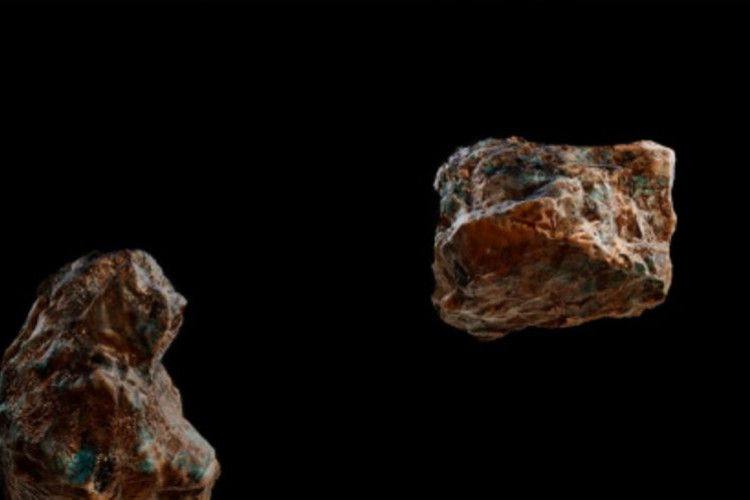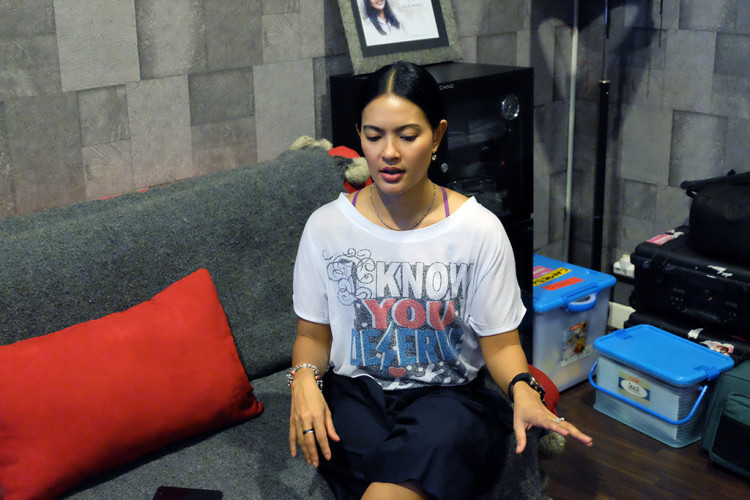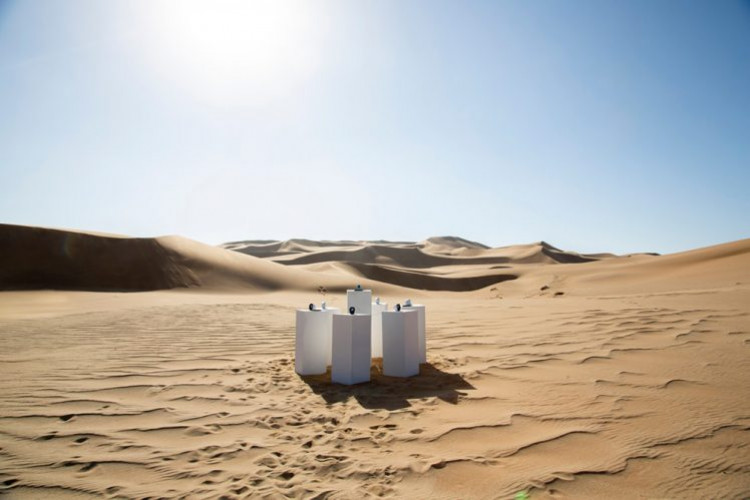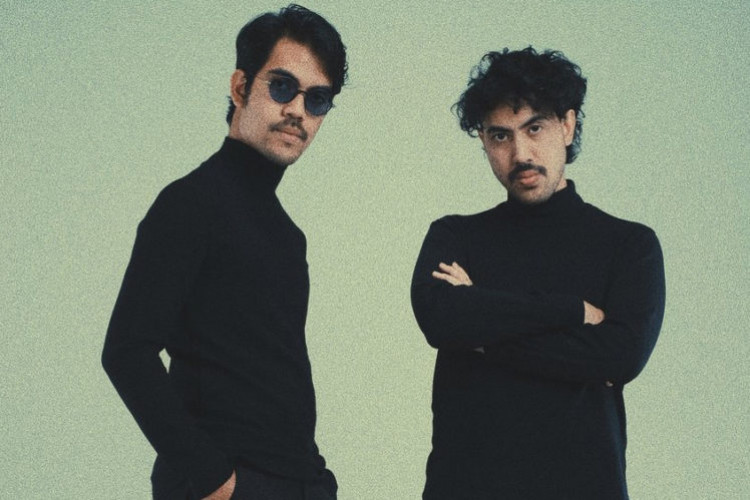
Leandro Quintero Talks About Creativity, Collaboration, and “Pluralism”
We caught up with photographer Leandro Quintero to talk about the contradictory nature of references, the importance of collaboration and his most recent exhibition “Pluralism”.
Words by Ghina Sabrina
As a photographer, the journey that Leandro Quintero has to go through to become the artist that he is today was quite an unexpected path. His entry towards the arts was by means of surrealism and French poetry, but through there, he was charmed by photography. For him, it was an honest format to express himself and show things the way they are. Looking at his personal works, they are known to have an element of romanticism in the sense that it embeds new meaning in things we often take for granted. For his newest exhibition “Pluralism”, which he curated alongside Stacia Hadiutomo, he had gathered local photographers and stylists to define what the word meant to them in the context of today’s socio-political landscape. We caught up with him during the exhibition to talk about film as his preferred medium, expressing his own identity in the midst of commercial works, as well as “Pluralism”.
There are a lot of reasons why people got into photography, from being inspired by their idols to finding an outlet to express themselves. What was your reason?
It was really by mistake because I just bought a point-and-shoot camera when a good friend of mine was moving from Argentina to Venezuela and I used that special day when he was leaving, there was a party that we did, to shoot the whole night. Since then I find that it was a pretty honest format to express yourself. And I think then, I couldn’t stop. I think photography has something to do with trying to show things how they are. That’s how I see photography although other people would see it differently.
I discovered art actually by reading surrealism, French poetry from the 1920s and from that I discovered visual arts. I was not really inspired by one particular photographer. When I started doing photography, I then started to discover many other people. If you ask me now, yes I do have my influences of course, but then, it was something really pure because I didn’t know anything about the format. I was just shooting. It felt very pure to me, in a sense that the way you react when you don’t have any references is more unique when you do have them. By having references you’re destroying creativity. It’s something the creative industry also should be thinking about, in a sense that if you are a teacher or a creative director, it’s good to see what people are doing, but the main thing is to teach people or to use creativity to free themselves to a lot of things from a lot of things. Sometimes references could be very damaging. Not teaching you how to look and do at things properly because there’s always this risk of creating generic things.
The world we are in today, we have endless scrolling down of information and that’s stuck in the back of your brain. Whatever you may think, “I’m immune to it”, you are not. It’s in your subconscious.
There is always a touch of romanticism in your work. Could you tell us about how you approach your subjects when doing shoots?
Sometimes references could be very damaging.
It depends. I need to separate it into two layers. One is when I do fashion, and the other is when I shoot freely. I agree that my personal work is very romantic but not in a romantic way that we perhaps understand as romantic. It’s romantic in a sense that it’s revaluing the banal things, the mundane and the things that we mute on a daily basis. Romanticizing precisely that area of reality. Everything that is on the peripheral part of life. In that sense, yes I agree that my work is romantic. That kind of romanticism is something that I’ve been very close with for the very reason that I don’t want to destroy a single thing.
You have lived in different parts of the world, from Argentina, Berlin, and Jakarta. How has the changing landscapes affect how you see the world and how is it reflected in your works?
I’ve lived in 7 cities now. I was living in Madrid, Ibiza, Berlin, London, Switzerland, Jakarta and Ubud. So for the last 3 years, I was living in Ubud with Karin (Wijaya). And now I’m here in Jakarta for a little bit. I have to say, the more you open up to the world, the more you put your body, mind, and everything to integrate to where you are and to be open about diversity. I think diversity and that sense of plurality of very wide ideas of what individuals carry with them, is perhaps the most uplifting influence. I could say that I was feeling close to Spain because it’s my mother language, but I think the most influential city amongst all of them is London.
I think London made me understand that diversity is everything. Once you get used to being surrounded by people from all over the world, carrying their stories, their fates, their beliefs, and everything, you don’t want to go back to your own way of understanding things. That exchange is the richest thing that as a human being you can have as an influence. Collaborating with other people, debating with other people’s ideas.
When did you live in London?
It was from 2000-2003, then I moved to Madrid for 3 years, came back to London in 2006, and moved to Berlin in 2011. Then after Berlin, I came here. I’ve been back and forth to Berlin in the last 4 years for the holiday. Last September, I had an exhibition in Barcelona in Swab Art Fair, which is the main international art fair there. So I’m going to have an exhibition there with an Indonesian photographer which used to be my flatmate back then in London, Nadia Razak.

Foto: Ardi Widja

Foto: Ardi Widja

Foto: Ardi Widja

Foto: Ardi Widja

Foto: Ardi Widja

Foto: Ardi Widja

Foto: Ardi Widja

Foto: Ardi Widja
Foto: Ardi Widja
Film could be considered as the medium you work with the most. What was the reason behind this and how has it shaped your style?
To be honest it’s a matter of age (laughs). When I was studying, I was 17 and digital didn’t exist. The first digital camera that I remember having was back in 2006 and I bought one just to try and I fucking hate it. I hate everything in it. I thought that I was losing a lot of time looking at my screen and getting lost in buttons, but I was not really focused on the viewfinder, where you need to put all your attention in. Also, it’s because I find myself way more honest when working with film. I mean, you should do whatever you like in any format. I’m not going to open up that stupid debate on digital versus film, do you whatever you like as long as you have something to say. Then, the format is a question of preference.
I think London made me understand that diversity is everything.
But, as a person of my generation, it’s the only thing I knew and also I like the sense of honesty that the format itself has. For instance, when I take a digital frame until the frame becomes something, I need to go through a lot of process of editing until the image becomes valuable. But when I use film, I never even edit the image. It’s what it is. I think it’s a very honest way. And I love the process of waiting. Back then, whatever you were doing, you would still have full control of your work. In the sense that when you’re working for a job for a client, you have to wait 3-4 days for the lab. Now if you work in digital, you have the client next to you telling you what to do so you no longer have control, and when the shooting has finished, they would take the files straight away. So it’s almost like, I feel violated. With film, I like that feeling of anxiety of waiting, going to the lab, having a relationship with the lab, and all that. I love it.
It’s not even a matter of trend. It is a trend but I’ve been doing film since 1996 so it’s the only thing I knew. I feel comfortable with it. And I always love to change cameras.
What’s your preferred film roll and tell us about your gear.
Portra 400 and Kodak Ektar. For black and white, Ilford HP5. I’ve been using so many cameras. I’ve been using Contax T2, Yashica 124 and T4, a Fuji 6×9, lately I’ve been using a lot of Nikon F6 and sometimes when I can rent, I’ll use a Mamiya 7. I’m changing them all the time. I’m into polygamy (laughs).
As a creative, it is often difficult to express your own identity in the midst of commercial works. What is your take on this?
I have to say, it is something really new and I’m really exploring it right now in the last few years. I come from a completely different background than fashion. The fact that I’m doing fashion here has pretty much a lot to do with Karin because when I was living in Berlin I was more doing art. I was collaborating more with other artists, doing art fairs, galleries, so I was really into fine art. So fashion for me is a new thing. Commercial for me is a new thing. The only way that I see – to explore it in a distinctive way is if you come to do a commercial with a variety of backgrounds and influences. If you come from different sources, your work is going to be way richer. I think whatever you do, be it fashion, commercial, you need to take influences from a good book, an independent film, a performance, music, the richer you are with culture, the more it’s going to be reflected in your work.
You need to explore more, absorb and integrate it into your existence. Yes, it takes a lot of time to develop your own language. The most difficult thing to do in life probably is someone being able to recognize your work right after 2 seconds. It’s the most difficult thing. If you can reach that, you’re doing well. You also need to have a gap for exploring and to allow different becomings in your work. I think that’s fundamental. Let’s say, in your own relationship, it’s better that you don’t have fixed roles. If someone washes the dishes one day, the next day would be the other one’s role.
You need to be open and flexible. Go explore and allow yourself to become many things, as in that’s the juiciest part of doing whatever project related to creativity. Your becomings. Think about that. Allowing yourself to become something else. Because then you can reflect that kind of idea with identity politics. It’s when you reject all the things that are not like like you and it’s really bad. It doesn’t add anything to the pluralism that we’re looking for. We are in that era ruled by hate, either you’re a left wing and an angry piece of shit, or a right wing and also an angry piece of shit. In the current industry, it’s also like that. “He’s doing minimalism and I’m doing baroque and that sucks and I’m cool.” That’s such a primitive way of thinking. I think if you’re doing that, you’re erasing the potential of what’s happening in the middle and in the peripheral part of culture. And those sides are the ones we need to explore, regain and articulate. That’s where the oxygen comes from. From underground or from the outside.
You’re known to have regular collaborators throughout your works. What do you always look for when working with a collaborator?
I always collaborate with different people. In here, I’ve been collaborating more with stylists mostly but in Europe, I was collaborating with producers of electronic music, painters, poets, you name it. Actually I was even in a collective with 5 girls, and they’re all multimedia artists themselves and I was more into the creative direction of the whole group. But it was very rich in that sense. Because that’s what creativity is about. If you’re in creativity, if you don’t understand that the driving force of your brain, it has everything to do with that platonic level of affinity with people, that’s what makes you feel alive. It’s almost like where the magic happens.
The richer you are with culture, the more it’s going to be reflected in your work.
I’m always open to working with people for the very reason that I understand the value of it. Mostly I’d have an aesthetic affinity or intellectual affinity. Those layers always go together. But sometimes, when I collaborate and they’re completely different than what I do, that’s also appealing to me because when you collaborate, you need to put your ego up your arse. Let’s put it that way. You need to become that person, find common ground, and empathize with them. I was talking with a friend of mine and I was explaining that when I created “Pluralism” with Stacia (Hadiutomo), Stacia is a very neat person when it comes to selections. She’s very objective. From my point of view, since this is the first time for this kind of event, I have to look at everything with more empathy. I didn’t want to be a complete nazi saying no to a lot of things because I need to look from the context of where we are now. Right now, the creative industry, the artists themselves, and everything, and you need to look at it with more empathy.
The creative industry is moving rapidly, do you have any tips on how to survive in this industry?
I’m surviving the millennials, I don’t know how I did it. people from my generation are facing this dilemma with millennials that are willing to do anything for free or filling any single hole as possible. I think that is a very difficult force because it’s destroying the market. If we talk about commercial jobs, you can’t compete at the level that you charge 20% less with people that are charging 10x less than you. There’s nothing you can do about it. I think what they don’t realise themselves is that whenever you go down that route, you will never be getting paid properly. It’s a very dangerous thing to do. But on the other hand, it’s not easy. For me, the main thing is to respect what you do. Sometimes you’re going to be more broke and sometimes you’re going to lose some jobs it’s a question of respecting what you’re doing. If you respect what you do, people are going to respect you. If you don’t respect your own work, it’s hard to look at you with respect.
I think we need to approach this with a nicer sense of collectivism. In a sense that there should be a union that regulates the market and more or less dictate the price. If the philosophy is of pure capitalism, then, there is not much gap for possible business. You need to have a sense of community. You can’t compete with people who are able to set their price 200% less than you. I’m concerned that the disparity of wealth in this country will just get wider and the middle class will just disappear. It’s either you’re a multimillionaire or you got nothing.

Foto: Ardi Widja

Foto: Ardi Widja

Foto: Ardi Widja

Foto: Ardi Widja

Foto: Ardi Widja

Foto: Ardi Widja

Foto: Ardi Widja

Foto: Ardi Widja
Foto: Ardi Widja
You’ve spent quite a while working in Indonesia as a photographer. How do you see Indonesia’s photography scene?
Great. I think it’s great, it’s got a lot of potential, and this exhibition is a good example of that. What I see, the problem is that I think that the level of teaching related to the creative industry are young people failing to enter the process of decolonizing their brain; not looking at the West as the standard of what is valuable and what is valid or not. Just look at it this way, why are they so obsessed with the international community and belonging there or replicating that, even from the business perspective. How everything works. What you should do is to go to a huge market and sell what is missing there. What these people are not having. And then you need to find out the answer in order to export it. And actually add something to the international community that you are so looking all the time. I think once you unlock that and you’re able to look at the value of your culture, the aesthetics that is so unique and distinctive, then you can try for that and your ideas can cross borders.
What makes an idea a good idea? Its ability to transcend.
What makes an idea a good idea? Its ability to transcend. The creative industry here, they like to lie to themselves too much. They create this little bubble and they feel comfortable. When you have a good idea, whatever you do, your ideas don’t matter unless it crosses borders. They reach other countries, other people, other platforms. It doesn’t matter what you believe in, your religion, your political ideas, if it crosses borders, then that’s a great idea because it could transcend. Because then it has the ability to hack to the universal power of human beings. I think that is something that the youth need to pay attention to.
Your recent exhibition “Pluralism” invites Indonesian creatives to define the concept of pluralism through their works. Could you tell us about how this show came about?
I invited 15 stylists and 15 photographers and I paired them for this exhibition. Out of the 15, 4 couldn’t produce something new for the show because they were busy with their commercial life, the rest, they produced something new. I didn’t want to fence them in a conceptual way of saying what pluralism is about. Pluralism is actually the word that guides me to entangle the entire show, but it’s not a concept. Sometimes I choose a word and then I tried to accommodate everything around the word or the meaning of the word. So basically I did what I’m not used to be doing. Normally when you work here, the client or whoever will come up with the references and the mood board, and they’ll say “I want this”, here, I gave them the freedom to do whatever they want. I told them, “approach it however you want it and be yourself.”
Mostly I paired the stylists to take them out of their comfort zone, for example with Vicky Tanzil, if you’re used to his work, he’s very minimalistic and subtle and I paired him with Raynard Randynata which has a very queer input, which took Vicky to a different kind of becomings. And then for Suhadi Budiman, I really wanted him to be part of the exhibition because he’s a great stylist, but I paired him with a friend of mine from Berlin because I didn’t want him out. One of the beautiful things that Suhadi told me was when he said, “I’m really thankful that I can be part of this event and feel free to do whatever I like where I couldn’t do in my own country.” Which is to be openly gay and to be openly himself. I was really touched by that. It’s a pity that he needs to go through all that. He needed to go 20.000 kilometres away to be himself. We should be talking about those things. Obviously, I understand that with the environment here, it’s not that simple.
Creativity is not just for mere entertainment.
As a first event of this scale, I’m very happy. We have very good feedback. People were really happy. I also feel that it’s also very empowering for them. In the sense that the reason why I did this show is because I’m tired of listening to them complain about everything. Well, everything that terrifies you is your opportunity to reshape it. So you should take that feeling of terror in order to reshape the culture. They need to understand that creativity is not just for mere entertainment. You should take something that is transformative to the culture. What happens after you read a good book? You become a different person. You need to engage with your creativity in a political way. Not only on the surface, you need to actually engage.
What does the future hold for Leandro Quintero?
To be honest I’m not a very ambitious person. One of the things that I came to when I lived in Bali, which completely blew my mind, was to understand the beauty of austerity. I was living in a jungle with very basic things, what do I need to be happy? I’ve been in the schizophrenic cities of the world, it’s that anxiety that we have here of wanting things all the time. Are we happy? I don’t think anyone’s happy. I think everyone’s escaping through drugs, food, sex, escaping to all, but are we happy? If you ask me what my future holds, I think it’s understanding that my sense of happiness has to do with being as honest as I possibly can. And that reflects the integrity of my work and how I live. And to live a beautiful life. That’s the only thing I aim.



